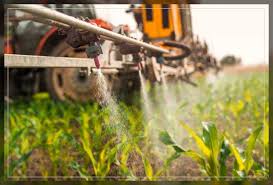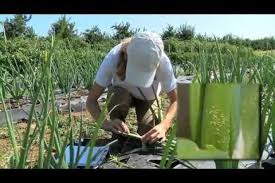This article examines economic damage caused by pests and the supply factors influencing agricultural markets, integrating the pest analysis framework to assess economic thresholds and pest-related losses.
Introduction to Economic Damage in Agriculture
The amount of pest-induced injury to a crop justifying the cost of artificial control measures is termed economic damage. An economic threshold is the insect population level or extent of crop damage at which the value of the crop destroyed exceeds the cost of controlling the pest.
Economic thresholds can be expressed in various ways, including the number of insects per plant or per square meter, or the amount of leaf surface damage.
In many cases, thresholds are established through scientific research, though some remain educated estimates due to unstudied pest-crop combinations.
Read Also : Types of Seed Germination, Seed Emergence and Seedling Vigour
Definition of Economic Damage and Thresholds in Agricultural Systems

The amount of pest-induced injury justifying artificial control measures is called economic damage. An economic threshold represents the pest population or crop damage level where the value of the destroyed crop surpasses pest control costs.
Thresholds may be quantified as insects per plant, per square meter, or leaf surface damage percentage. Scientific research establishes many thresholds, but some pest-crop combinations rely on educated estimates due to limited studies.
Sub-Economic and Non-Economic Pests in Agriculture
A sub-economic or non-economic pest has a general equilibrium position far below the economic injury level, with its highest population not reaching the threshold requiring control measures.
Understanding Supply in Agricultural Economics
In economics, supply is the amount of a resource that firms, producers, laborers, financial asset providers, or other economic agents are willing and able to offer to the marketplace or directly to another agent.
Supply encompasses currency, time, raw materials, or any scarce, valuable object. This concept is often abstract; for example, time supply involves offering another resource in exchange for time spent.
Supply is plotted as a curve, with quantity provided (dependent variable) on the horizontal axis and price (independent variable) on the vertical axis.
In goods markets, supply is the product amount per unit time producers are willing to sell at given prices, holding other factors constant. In labor markets, labor supply is the time individuals are willing to work, based on wage rates.
In financial markets, money supply, influenced by a country’s monetary authority, includes highly liquid assets like M1 (narrow money, coins, cash) or M2 (M1 plus short-term deposits and market funds).
A supply schedule is a table showing quantities firms are willing to supply at specific prices under existing conditions, influenced by the good’s price, related goods’ prices, production costs, technology, production function, and seller expectations.
Read Also: Bird of Paradise Flower (Strelitzia reginae): All You Need To Know About
Factors Affecting Supply in Agricultural Markets

Numerous factors influence a seller’s willingness or ability to produce and sell goods:
1. Good’s Own Price: A positive relationship exists between price and quantity supplied, where higher prices increase supply.
2. Prices of Related Goods: Inputs derived from related goods, like pigs for Spam, create an inverse relationship; higher pig prices reduce Spam supply due to increased production costs. Alternatively, firms may shift to more profitable products using existing resources, like switching from belts to leather pouches. Joint products, like beef and leather, affect supply; higher steak prices increase cattle processing, boosting leather supply.
3. Conditions of Production: Technological advancements increase supply, while weather significantly impacts agricultural outputs. Economies of scale also influence production conditions.
4. Expectations: Anticipated future market conditions, like expected demand increases, prompt immediate production boosts, shifting the supply curve outward.
5. Price of Inputs: Higher input costs (land, labor, energy, raw materials) shift the supply curve left, reducing supply at given prices.
6. Number of Suppliers: More firms entering an industry shift the market supply curve outward, lowering prices.
7. Government Policies and Regulations: Environmental, health, wage, tax, utility rate, and land use regulations impact supply significantly.
Other factors, like weather forecasts prompting increased stocks of winter goods, also affect supply.
Supply functions are classified by source (consumers or firms), using notational conventions: I produced goods (industries), J factors, L firms per industry, and K consumers.
The supply function mathematically expresses the relationship between supply and influencing factors, such as price of the good and related goods, with non-specified factors held constant.
Economic Injury Levels of Cotton Pests in Agriculture
The Economic Injury Level of cotton pests is outlined below:
- Pest: Economic Injury Level
- Jassid: 1 per leaf
- Thrips: 8 per leaf
- Whitefly: 5 per leaf
- Aphid: 5-7 per leaf
- Mite: 10-15 per leaf
- Spotted Bollworm: 5-10% infestation
- Pink Bollworm: 5-10% infestation
In economics, supply is the amount of a resource firms, producers, laborers, or other agents are willing to provide to the marketplace, encompassing raw materials, time, or other valuable objects critical for managing economic damage in agricultural pest control.
Do you have any questions, suggestions, or contributions? If so, please feel free to use the comment box below to share your thoughts. We also encourage you to kindly share this information with others who might benefit from it. Since we can’t reach everyone at once, we truly appreciate your help in spreading the word. Thank you so much for your support and for sharing!

